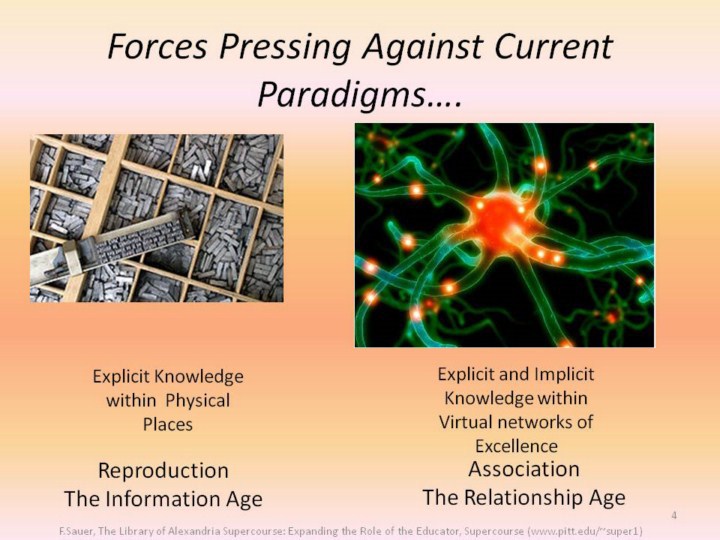| front |1 |2 |3 |4 |5 |6 |7 |8 |9 |10 |11 |12 |13 |14 |15 |16 |17 |review |
 |
This transformation, preceded by the “Information Age”, is characterized by the proliferation of new knowledge captured not only in worlds but also in sounds and images. This abundance of knowledge created the current quest to assimilate and use current knowledge. In this “Relationship Age” the selectivity and the speed of associations is pivotal to entrepreneurship and innovation, the role of the educator now also includes to become a catalyst for the expansion of the student’s mind to process the knowledge of our complex and chaotic world. The educator now is becoming a knowledge entrepreneur.
Historically, after the invention of the “press” that proliferated knowledge to a great extent in the form of books, and the evolution of the ‘public library’ that distributed that knowledge to the scientists and the workforce of the industrial age. Now we see roles models such as the Library of Alexandria creating with the Internet a new global ubiquity of digitized assets that facilitate the catalysis of new knowledge within complex social systems. From the explicit knowledge organized in a physical place we are evolving to a web of explicit and implicit sharing of knowledge, as now links to experts are associated with the explicit knowledge distributed in the web. From this perspective, the teachers now are the engineers of education, that take the knowledge built by experts, and rearrange them based upon the relationships they have with their students and the needs of their community. |